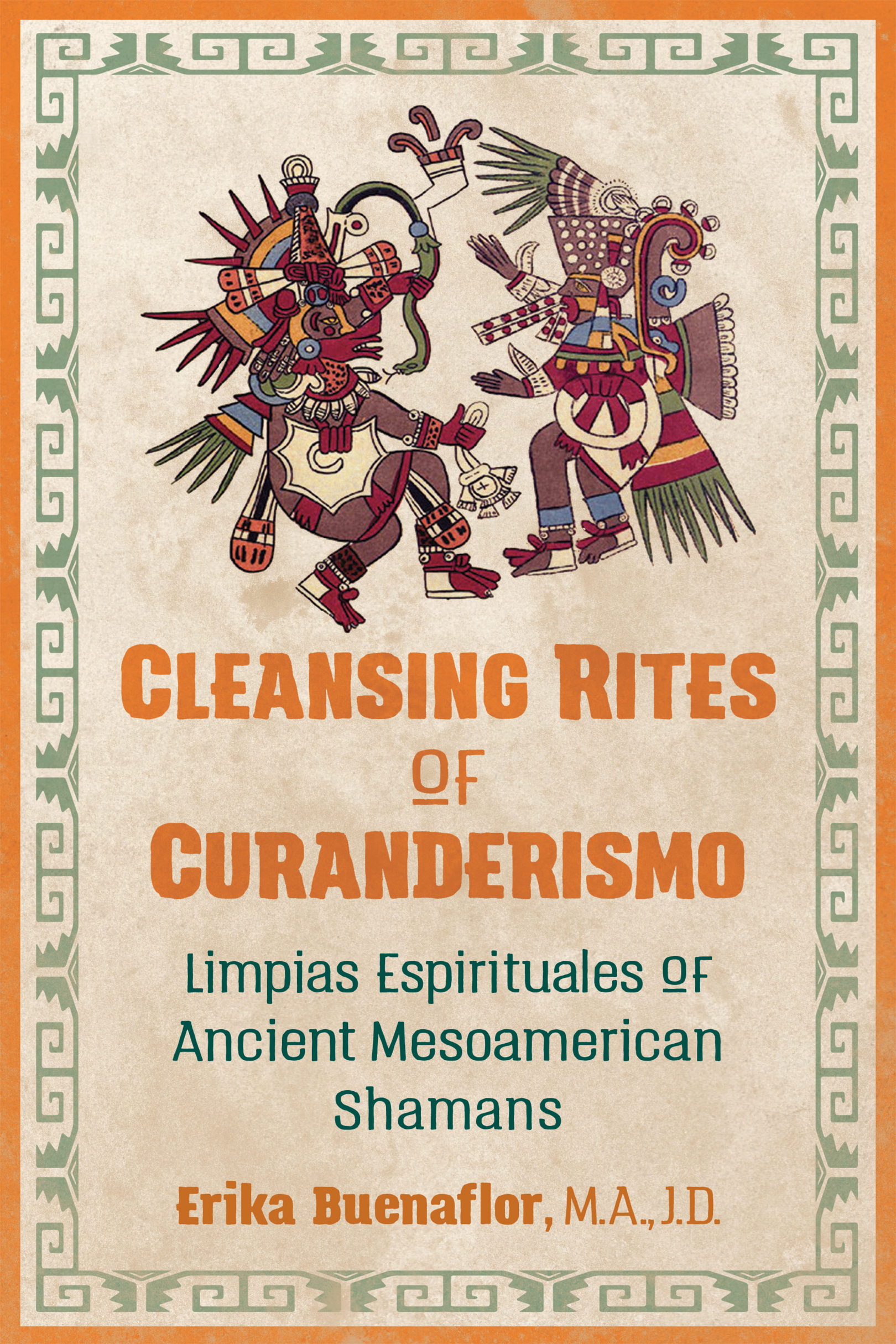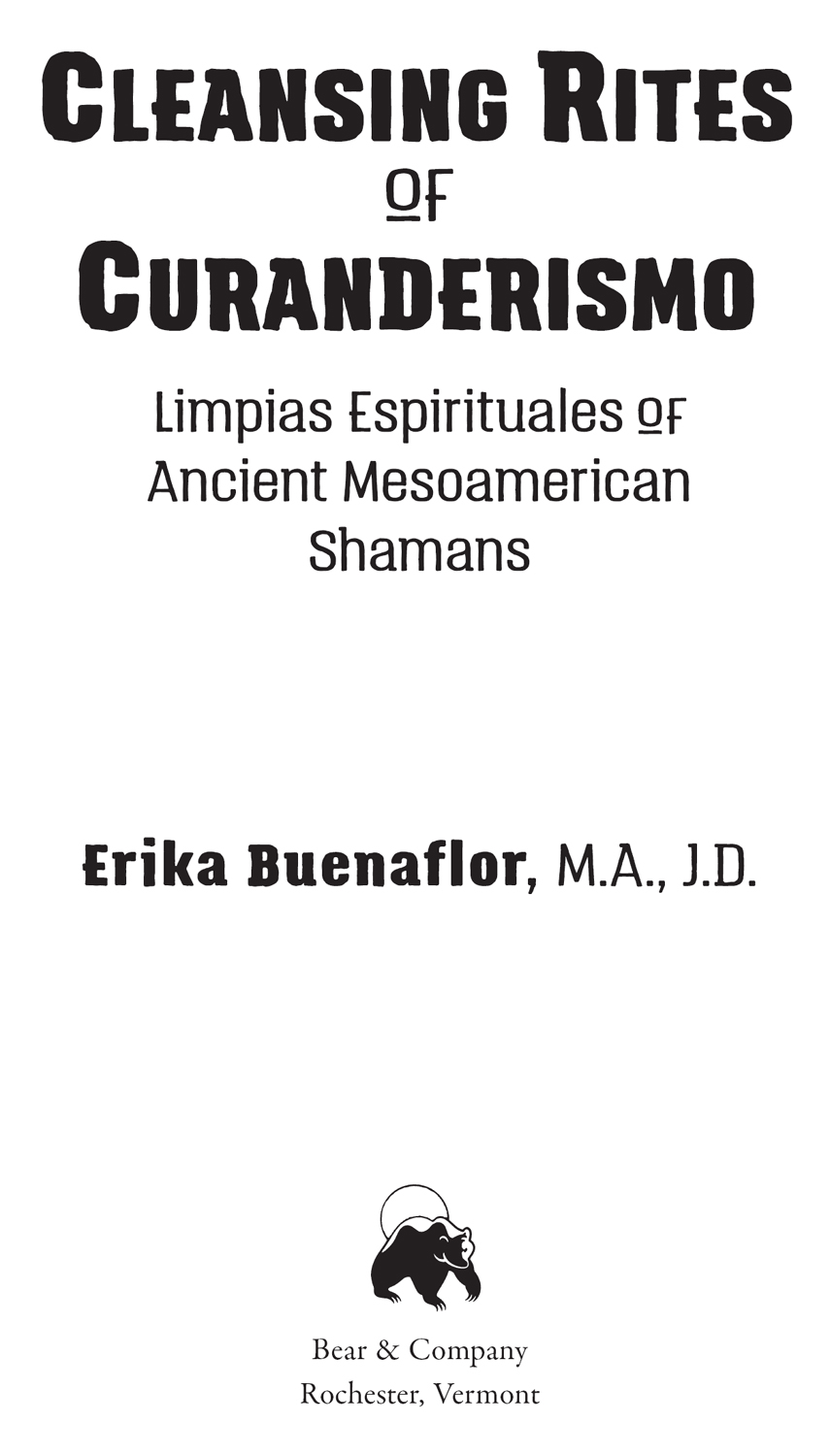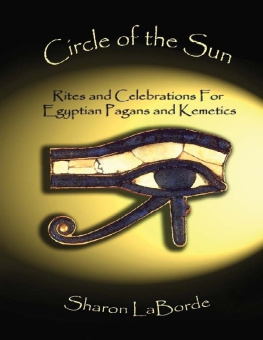

CLEANSING RITES OF CURANDERISMO

Erika Buenaflors new book, Cleansing Rites of Curanderismo, is a major contribution to a body of knowledge that has remained unrecognized for too long. It is particularly important because it takes curanderismo from the esoteric to the practical world. It is a long anticipated addition to our understanding of curanderismo.
ANTONIO TONY ZAVALETA, RETIRED PROFESSOR OF ANTHROPOLOGY AND BORDER STUDIES AT THE UNIVERSITY OF TEXAS RIO GRANDE VALLEY AND COAUTHOR OF CURANDERO CONVERSATIONS
Accolades to Erika Buenaflors brilliant book Cleansing Rites of Curanderismo. This is a much-needed teaching and an important validation of this ancient sacred healing tradition, which must be widely used in tandem with allopathic medicine as an answer to our modern life maladies. As a practitioner myself, I highly recommend it.
ITZHAK BEERY, AUTHOR OF THE GIFT OF SHAMANISM, SHAMANIC TRANSFORMATIONS, AND SHAMANIC HEALING AND PUBLISHER OF SHAMANPORTAL.ORG
It is a pleasure to endorse Erika Buenaflors book Cleansing Rites of Curanderismo on energetic and spiritual limpias. This publication will allow my students to explore the history and different types of limpias practiced by a number of shamans/curanderos/as. Highly recommended.
ELISEO CHEO TORRES, PROFESSOR AND VICE PRESIDENT OF STUDENT AFFAIRS AT THE UNIVERSITY OF NEW MEXICO AND AUTHOR OF CURANDERISMO: THE ART OF TRADITIONAL MEDICINE WITHOUT BORDERS
An Introduction to Limpias and Curanderismo
I weave back my disassociated identities moving forward in unity and wholeness.
Riding the undulating serpent.
La Xicana, who long ago reclaimed a dynamic and eclectic identity that was hers to shape and adore.
La Feminista, who now no longer pokes at, or intends to destabilize normative androcentric mores; this is simply incidental; her essence, presence, often stirs and shakes, it just does.
La Curandera, who understands the illusory paradoxical nature of attaching to defined identities; her appropriation and negotiation of identities is a way of communicating, embracing, and weaving back all dissociated parts of herself into her sacred heart.
ERIKA BUENAFLOR
T his book is an ofrenda (offering) of love. The material draws from over twenty years of practicing as a curandera; studying with curanderas/os and shamans in the Yucatn peninsula, the Sacred Valley of Peru, and a few botanicas in Los Angeles; and my graduate research on curanderismo and ancient Mesoamerican religious and shamanic practices.
This book focuses on limpias, which are Latin American curanderismo cleansing rites that can clear, heal, and revitalize the mind, body, spirit, spaces, and situations, as well as facilitate soul retrievalrecovering sacred essence energy that has left the body as a result of trauma. Limpias can also cleanse on the levels of different but interconnected dimensions, realities, and spaces.
Limpias typically incorporate holistic healing practices, including, for example, the use of plants and meditative remedies. They can also be shamanic in nature, as the curandera/o often knows, sees, or senses energies around the subtle energetic bodies and can journey to different states of reality or consciousness to track and clear the issues that have caused disturbances. These aspects take practice and trust in our intuition, but after many limpias, subtle energies become easier to manage. Limpias can also draw from magical practices in order to change a likely but unwanted outcome to an ideal one. Limpias are incredibly practical in that their sacred tools and methods are very accessible and effective, even for complete novices. Limpias are the most common rites within curanderismo because of their high utility; they facilitate holistic cleansing, healing, positive transformation, renewal, and rejuvenation.
This book provides the fundamental building blocks for the most prevalent types of limpias. It also provides examples of how they have helped my clients to attract ideal situations; heal from various forms of depression, insomnia, anxiety, and other types of illnesses; and experience what some would call miracles. I will explain what curanderismo is in more detail below. But for now, it is sufficient to know that curanderismo is a Latin American shamanic healing practice whose foundations lie in ancient Mesoamerican shamanic traditions.
In this book, I trace limpia ceremonies to the ancient Mesoamerica shamans, particularly those of the Mexica, also known as the Aztecs, and Yucatec Maya of the fifteenth and sixteenth centuries. My most influential mentors came from the Yucatn. They had either lived there all of their lives, or they had moved there at some point; at any rate, they were familiar with both Maya and Mexica or Nahua curanderismo and shamanic practices. I focus on these two ancient indigenous peoples, the Mexica and Yucatec Maya, because my mentors identified with these traditions and taught me their modern practices.
The different limpia traditions, and their ways of understanding, are as diverse as the thousands of indigenous peoples that have existed in the Americas. Clean lines of continuity between ancient and modern traditions definitely do not exist. These traditions often comprise jagged and idiosyncratic discontinuities of consciousness. Nonetheless, there are shared underlying methods, values, beliefs, and goals that have continued.
There are three intertwined reasons for tracing limpia rites to their ancient Mesoamerican roots. First of all, being versed in the roots of a particular shamanic or healing practice enables the practitioner to be more comfortable and fluent in it, thereby making the practices more potent. I will explore the limpia processes and tools that the ancient Mexica and Yucatec Maya understood to procure cleansings, healings, purification, rebirth, birth, and revitalization. These processes were not necessarily seen as being linear in the sense that one process would result in a healing while another would facilitate a purification. Rather, limpia rites were often imbued with multivalent meanings and expressions; they could facilitate healings, purifications, births, and rebirths all at the same time. By tracing these roots, I hope to improve the ability of both novices and advanced practitioners to conduct effective limpias.
Secondly, tracing curanderismo practices to their ancient Mesoamerican roots allows us to reclaim indigenous healing methods that have historically been derided, ridiculed, and misappropriated. Reclaiming histories, ancestral medicines, and wisdom is often a critical component in the soul retrieval process for most modern Western peoples, who typically have no connections to ancestral medicines and wisdom and often feel disconnected as a result. This reclaiming is medicine in itself, and it can inspire us to weave our disassociated ancestral wisdom back into our heritage, as well as learn from, respect, and honor indigenous traditions.
Finally, intertwined in these goals is to enact the potential healing power of epistemology; claiming these histories as being worthy of being examined, further explored, and produced, embodying the power and right to choose how we shape and identify ourselves and our stories. Be shaped by someone or something else, or choose to shape yourself limpia lesson number one.
Next page




